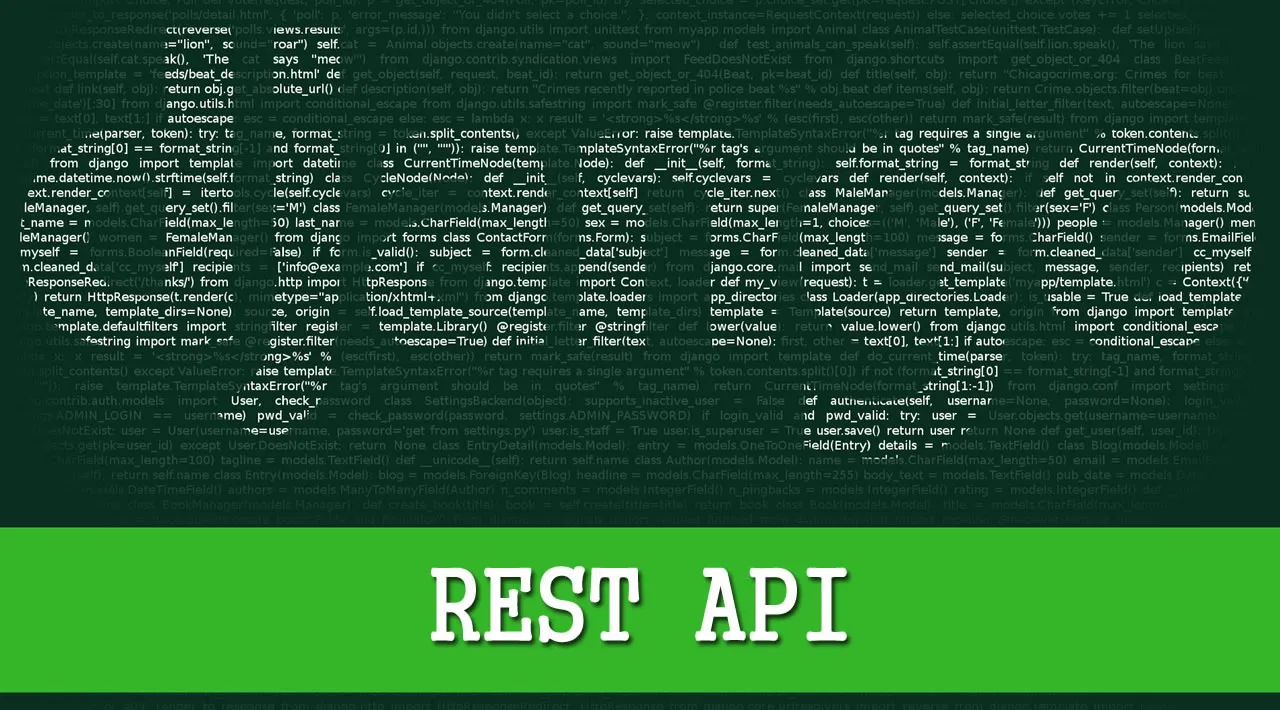I previously covered writing a Django application in a single file, for both synchronous and asynchronous use cases. This post covers the angle of creating a REST API using Django in a single file.
Undeniably, REST API’s are a very common use case for Django these days. Nearly 80% of this year’s Django community survey respondents said they use Django REST Framework (DRF). DRF is great for building API’s and provides many of the tools you’d want in a production-ready application. But for building a very small API, we can get by solely with tools built into Django itself.
Without further ado, our example application is below. You can save it as app.py, and run it with python app.py runserver (tested with Django 3.1). An explanation follows after the code:
import os
import sys
from dataclasses import dataclass
from django.conf import settings
from django.core.wsgi import get_wsgi_application
from django.http import HttpResponseRedirect, JsonResponse
from django.urls import path
from django.utils.crypto import get_random_string
settings.configure(
DEBUG=(os.environ.get("DEBUG", "") == "1"),
ALLOWED_HOSTS=["*"], ## Disable host header validation
ROOT_URLCONF=__name__, ## Make this module the urlconf
SECRET_KEY=get_random_string(
50
), ## We aren't using any security features but Django requires this setting
MIDDLEWARE=["django.middleware.common.CommonMiddleware"],
)
@dataclass
class Character:
name: str
age: int
def as_dict(self, id_):
return {
"id": id_,
"name": self.name,
"age": self.age,
}
characters = {
1: Character("Rick Sanchez", 70),
2: Character("Morty Smith", 14),
}
def index(request):
return HttpResponseRedirect("/characters/")
def characters_list(request):
return JsonResponse(
{"data": [character.as_dict(id_) for id_, character in characters.items()]}
)
def characters_detail(request, character_id):
try:
character = characters[character_id]
except KeyError:
return JsonResponse(
status=404,
data={"error": f"Character with id {character_id!r} does not exist."},
)
return JsonResponse({"data": character.as_dict(character_id)})
urlpatterns = [
path("", index),
path("characters/", characters_list),
path("characters/<int:character_id>/", characters_detail),
]
app = get_wsgi_application()
if __name__ == "__main__":
from django.core.management import execute_from_command_line
execute_from_command_line(sys.argv)
Neat, just 73 lines, or 63 not counting imports.
The first thing we do, following imports, is to call settings.configure() with the minimum configuration to get Django running. I covered most of these settings in my first single-file app post which I won’t repeat too much here.
One extra thing we’re using compared to that post is CommonMiddleware, one of Django’s many “included batteries”. In its default configuration it will redirect URL’s not ending with a slash (“/”) to those with one, useful for getting users to their intended content.
Second, we define some static data for our API to serve, using dataclasses (new in Python 3.7). These are great for storing and serving a small amount of unchanging data. At some point we’d want to move to using a database, but for our purposes it is easier to avoid setting this up.
(I’ve also shown my bad taste by making this a Rick and Morty character API.)
Third, we define three views:
indexredirects to the character list URL, as that’s our only data type in the API. If we expanded our API, we might want to show a “front page”.characters_listreturns a list of characters. If our list of characters grew large, we might want to paginate this to return only slices of characters at a time.characters_detailreturns the representation of a single character. This also has an error path for when we’re given an ID that doesn’t match.
Fourth, we map URL’s to our views in the urlpatterns list.
Fifth, we create the WSGI application object, which allows us to deploy the application. For example, if we’d saved this file as app.py, we could run it on a production server with gunicorn app:app.
Sixth, we introduce manage.py style handling when the module is run as "__main__". This allows us to run the application with python app.py runserver locally.
#django #api #python #rest #developer
